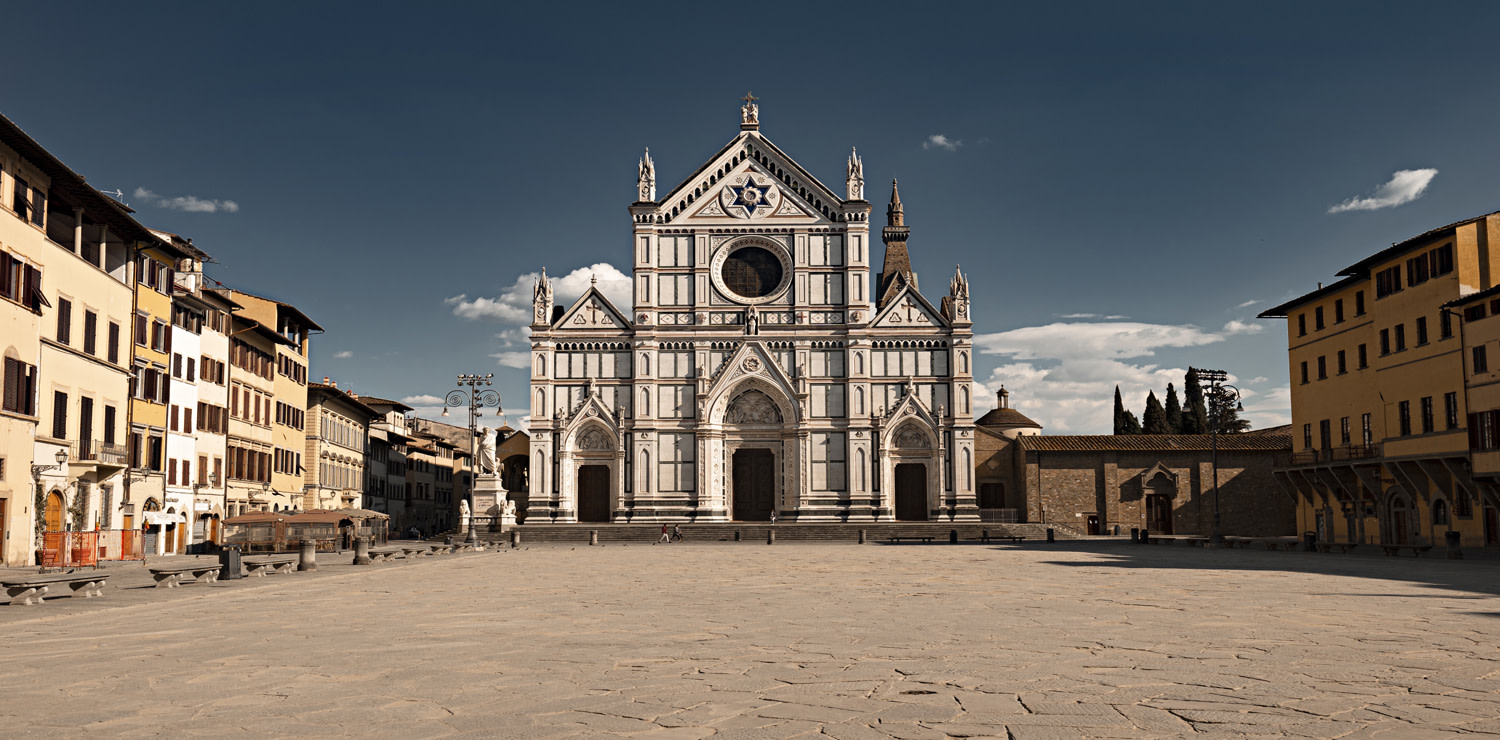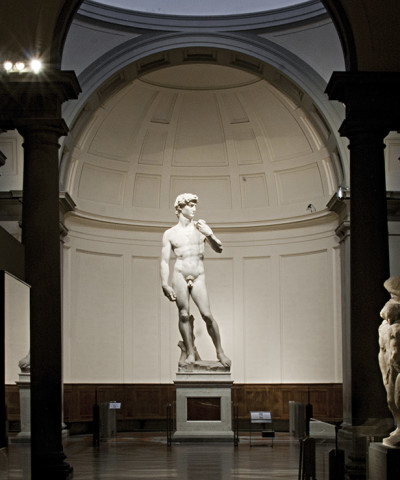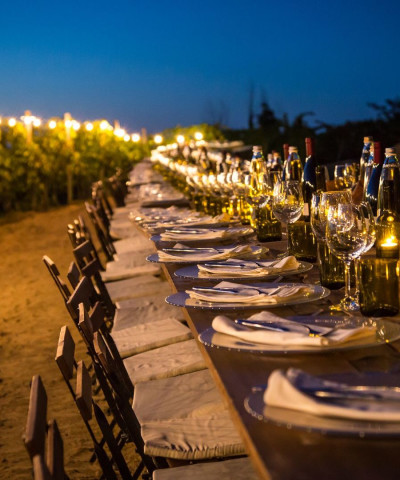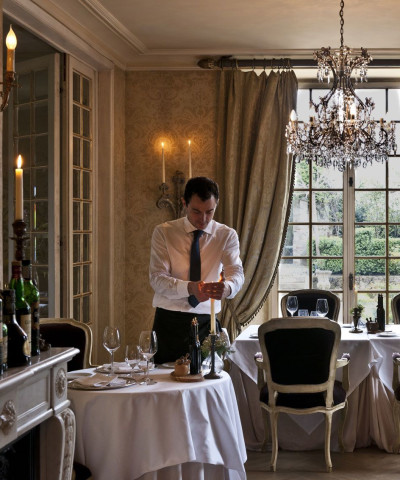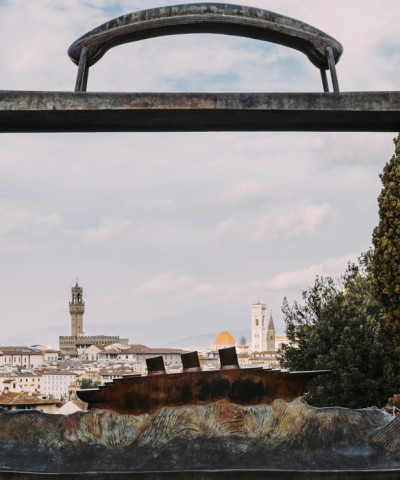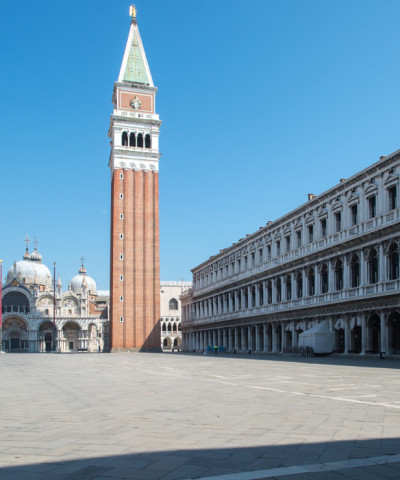The ten most beautiful squares in Florence
Magnificent en plein air masterpieces of art and architecture
From May 1st on, you are free to take a walk, then enjoy this Florence seen from its squares, a large open-air museum with free entrance. Handfuls of square meters that enclose in a stroke of an eyelash the expansion of centuries of art, culture and thought. Created to welcome the heart of religious, political and economic activities, today they are the fulcrum of the most vital sociality where the most authoritative of the ancient times lets itself be crossed like a tame elephant by the most contemporary and international passages. Let's get to know its history.
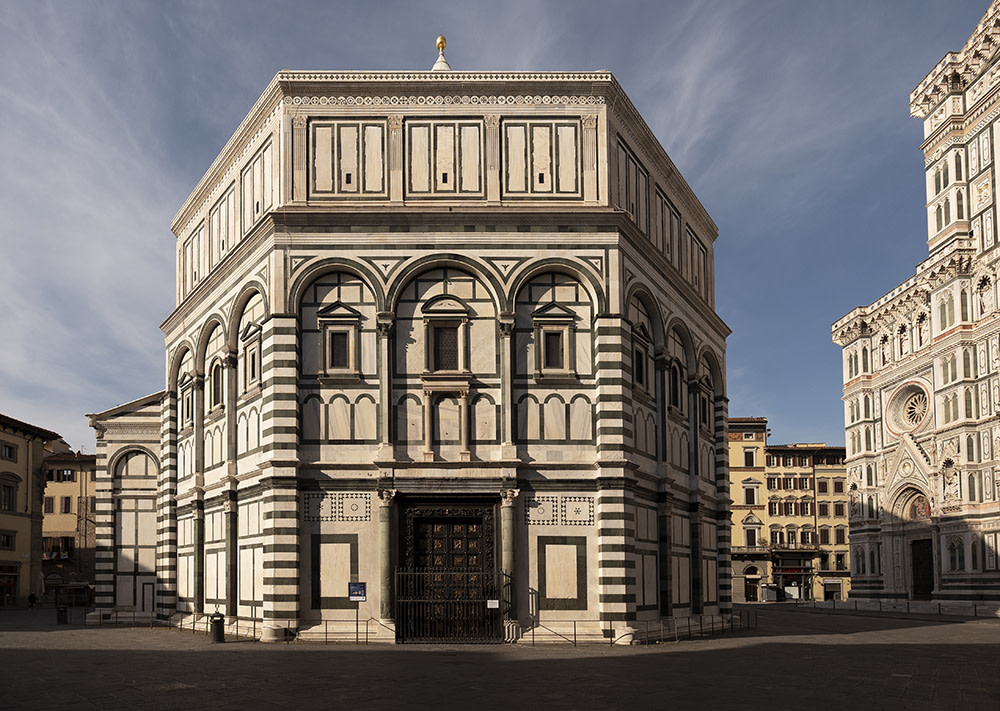 Piazza del Duomo and Piazza San Giovanni (ph. Lorenzo Cotrozzi)
Piazza del Duomo and Piazza San Giovanni (ph. Lorenzo Cotrozzi)
A rectangular area on which rise the Duomo and the Baptistery, the first Christian building in the city. Today's basilica, whose outer covering dates back to 1887, is the fourth reconstruction of a temple dating back to between the 4th and 5th centuries AD, based on a project by Arnolfo di Cambio (1296) crowned by Brunelleschi's revolutionary dome (1420-1436). To the right of the façade stands Giotto's Bell Tower, designed and built for a quarter by the great artist in the last three years of his life (1334-1337), later completed by Andrea Pisano and Francesco Talenti in 1359.
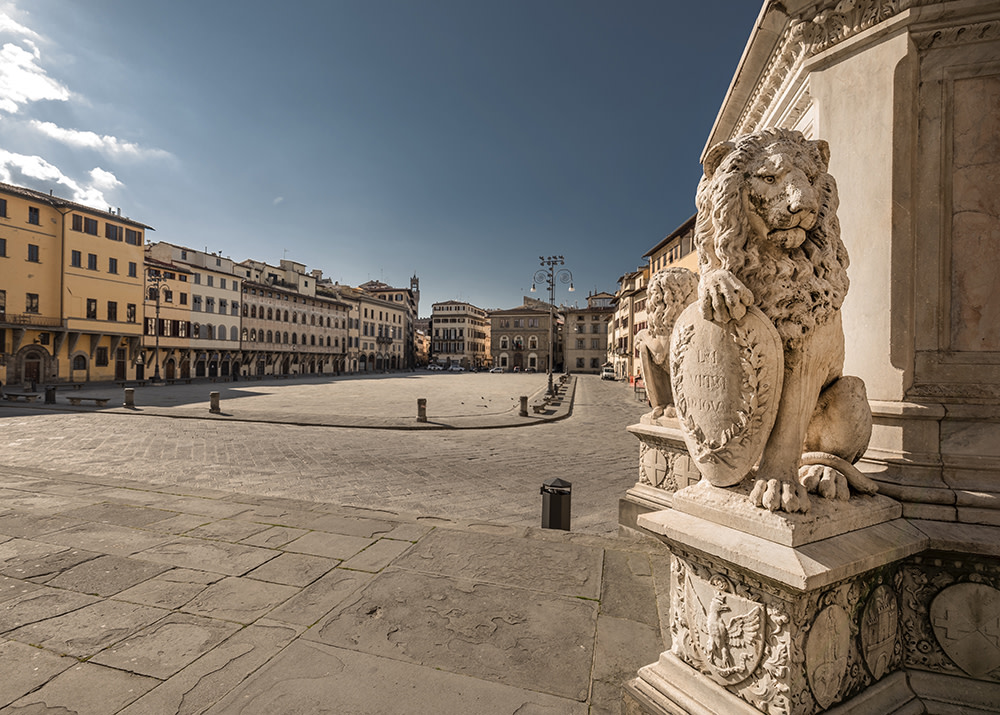 piazza santa croce (ph. Lorenzo Cotrozzi)
piazza santa croce (ph. Lorenzo Cotrozzi)
Since its origins (1173-75 ) linked to the presence of the Franciscan friars, it was just outside the second municipal circle. Already in the fourteenth century and still in the Renaissance there were festivals and jousts, and of course the game of football. The square is overlooked by Palazzo dell'Antella, Palazzo Cocchi-Serristori and the basilica of Santa Croce, one of the most famous Florentine monuments for its architecture, frescoes and the number of burials of illustrious Italians.
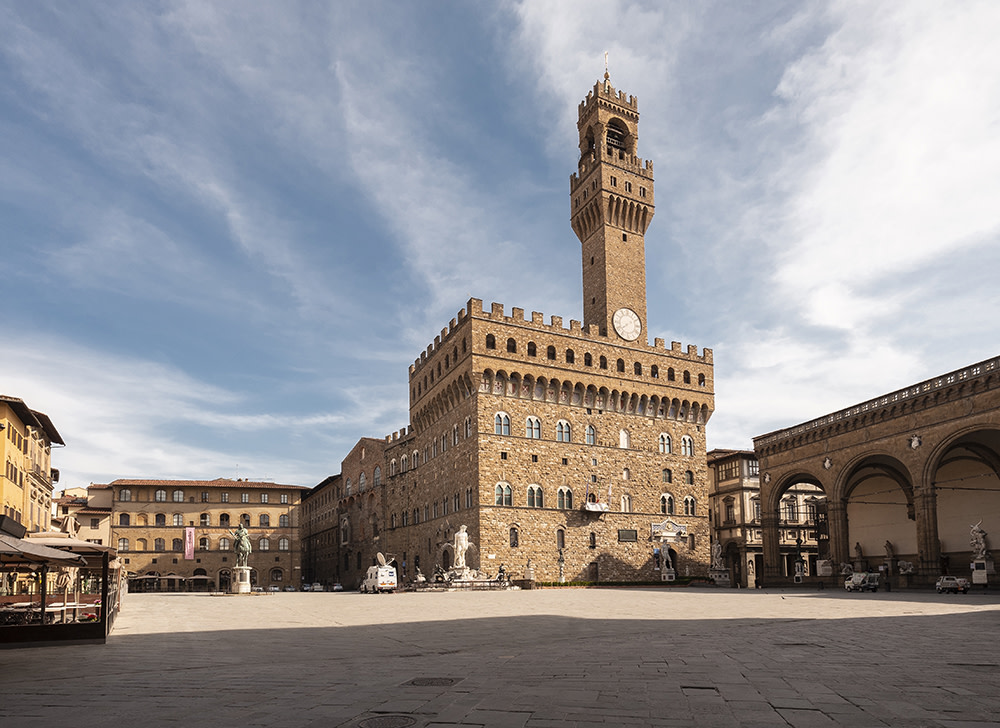 Piazza della Signoria (ph. Lorenzo Cotrozzi)
Piazza della Signoria (ph. Lorenzo Cotrozzi)
The statues in front of Palazzo Vecchio and under the Loggia dei Lanzi - built in the 14th century for public ceremonies, originally with a garden on the terrace - are mostly reproductions. Stars of this park of wonders: the Marzocco, symbol of the city, a lion resting its paw on the lily, and Judith and Holofernes both by Donatello. But the real lord is Michelangelo's David (1500), echoed for beauty and skill by Benvenuto Cellini's Perseus and Giambologna's Rape of the Sabine Women.
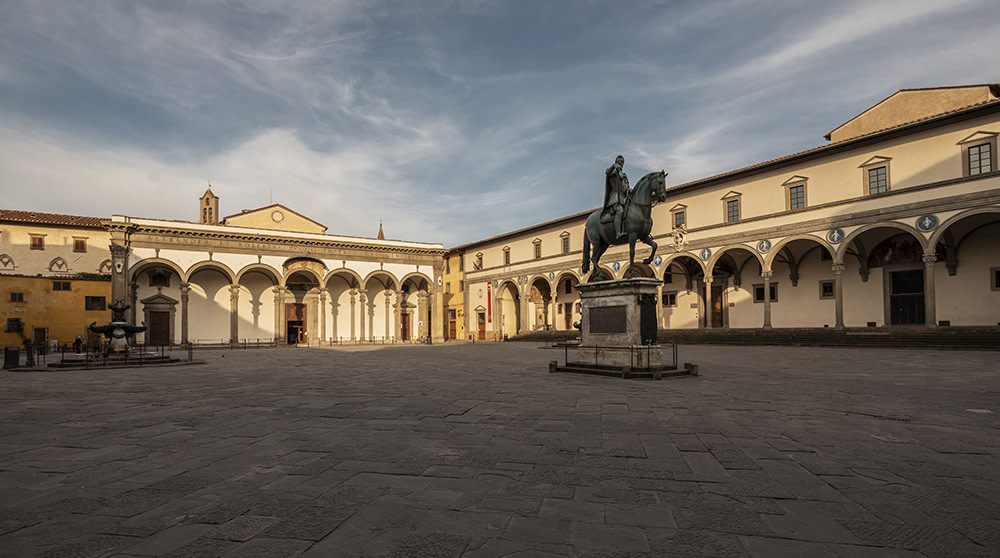 Piazza Santissima Annunziata (ph. Lorenzo Cotrozzi)
Piazza Santissima Annunziata (ph. Lorenzo Cotrozzi)
Already existing in the thirteenth century had its urban definition in the fifteenth century by Brunelleschi. On the opposite side of the basilica, designed by Michelozzo and completed by Leon Battista Alberti, there are two opposite porticoes on either side, the one of the Spedale degli Innocenti designed in 1419 by Brunelleschi and the similar one of the Confraternita dei Servi di Maria, Loggiato dei Serviti, designed by Antonio da Sangallo, in the centre is the equestrian statue of Grand Duke Ferdinando I, a work by Giambologna completed by his pupil Pietro Tacca. The square was born in an urban area within the third circle of walls, where the weekly market was held every Saturday. Still today, on 7/8 September, the feast of Rificolona, the day of the Nativity of Mary, is celebrated.
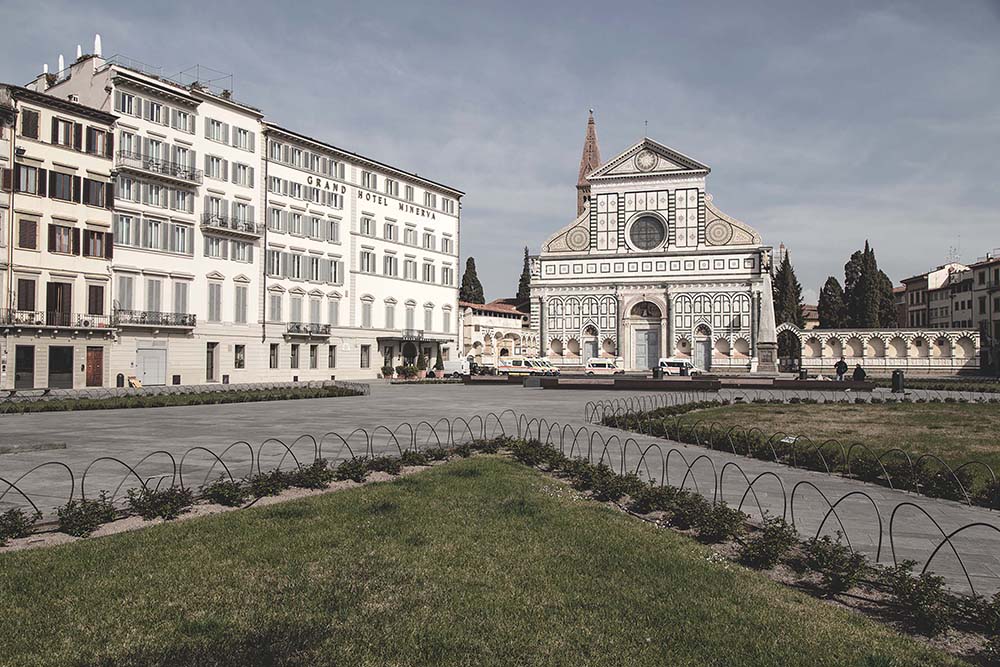 Piazza Santa Maria Novella (ph. Helene Vallet)
Piazza Santa Maria Novella (ph. Helene Vallet)
Started in 1287 and finished in 1325. It is bounded by the facade of the church by Leon Battista Alberti, the nineteenth-century transformation palaces and the loggia of the ancient Ospedeale di S. Paolo, today the Alinari Museum. The two marble obelisks by Giambologna were raised in 1608. Recently the square has been brought to new life by a restyling aimed at the pavement.
Recently revived with the work of pedestrianization, this square in the ancient and authoritative heart of the city, a few steps from Piazza della Signoria and adjacent to the Bargello Museum, takes its name from the Complex of San Filippo Neri (also known as San Firenze from a misnomer of the name of a pre-existing building dedicated to San Fiorenzo) which in recent times and until 2012 hosted the Court and the judicial offices of the city.
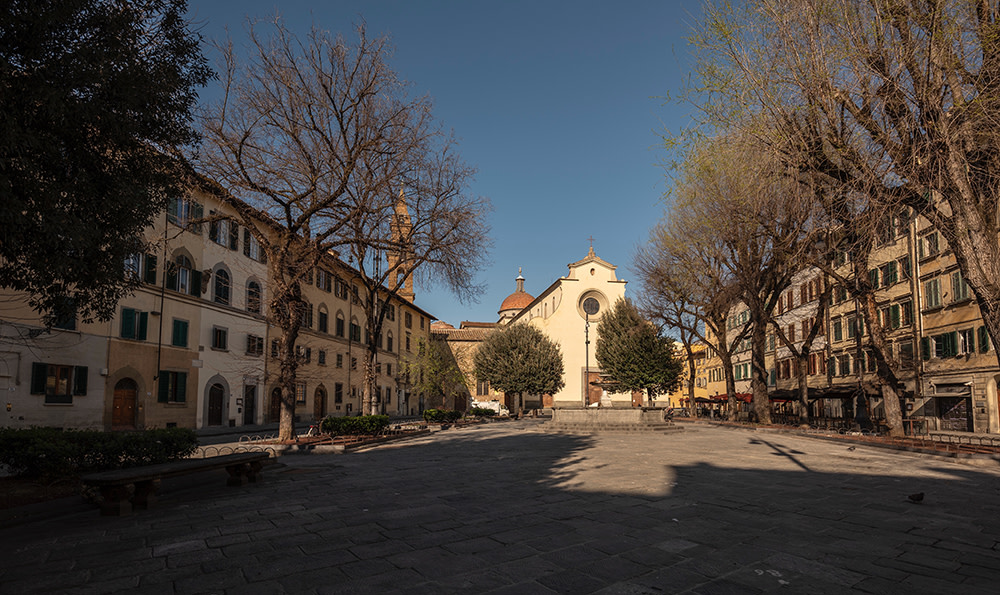 piazza santo spirito (ph. Lorenzo Cotrozzi)
piazza santo spirito (ph. Lorenzo Cotrozzi)In the year 1250 the citizens Spinello Accolti and Amedeo de Guido sold a house with vineyard to the friars of S. Agostino who built a chapel there. In 1262 the friars managed to start the construction of the church and the convent, today the Holy Spirit. In the centre of the square, a meeting place especially for young people in summer, there is the fountain designed by Cosimo Ridolfi, work of the sculptor Romanelli.
Along the side of Palazzo Medici Riccardi, you reach the square where on the edge of the staircase, low and wide of the church, there is the monument of Giovanni dalle Bande Nere by Baccio Bandinelli. The facade of the basilica is in rough bricks, which has remained unfinished despite the existence of a project by Michelangelo. On the eastern side of the square there are 15th and 16th century noble palaces, the Lotteringhi della Stufa palace and at number 6 in the complex of the former Jesuit convent, the entrance to the Ximenian Observatory founded in 1756. Continuing the tour of the basilica we arrive at the complex of the Medici Chapels, mausoleum of the Medici princes.
Built at the end of the last century at the price of endless demolitions and enlarged compared to the ancient Piazza del Mercato Vecchio built in the Middle Ages on the ruins of the Forum of the Roman city. The numerous disembowelments of 1885-95, represent one of the grossest errors. Where there was one of the two entrances to the disappeared ghetto, there is now a neo-Renaissance style building that houses the Fondiaria Assicurazioni. At the entrance to Via Strozzi there is a monumental arch with a triumphal inscription by Vincenzo Micheli. The collocation of the column of the Abundance, created by G.B. Foggini in 1721 to replace the original by Donatello, dates back to the recent 1950s.
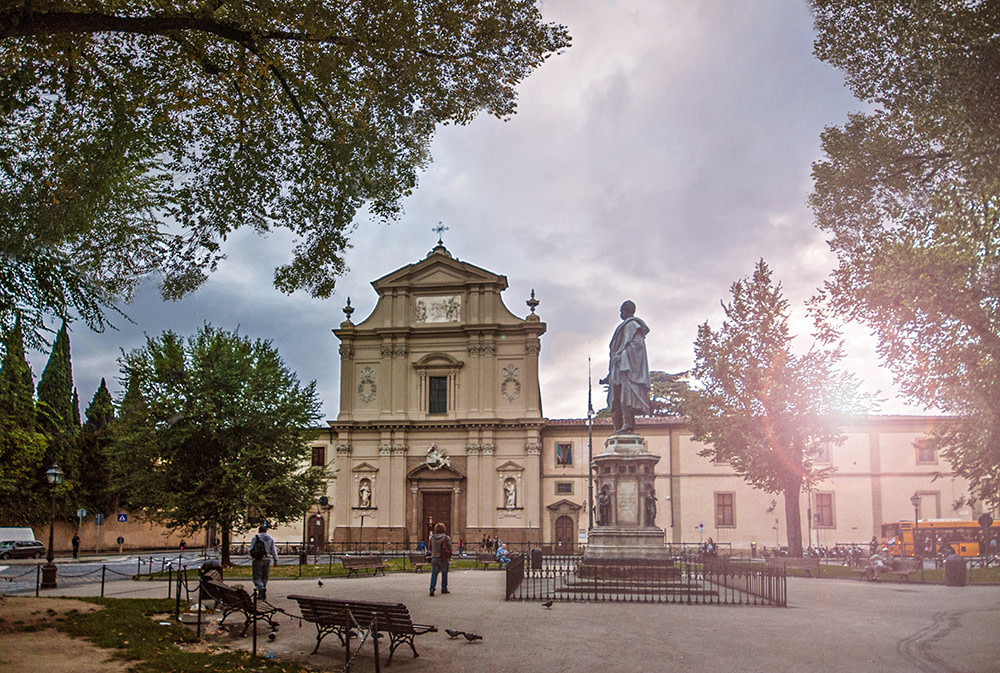 Piazza San Marco (ph. Lorenzo Cotrozzi)
Piazza San Marco (ph. Lorenzo Cotrozzi)It recalled the first public preaching of Friar Girolamo Savonarola, until the assault of the people on the convent to take possession of its. It remembers the meeting of Francesco I de' Medici with Bianca Cappello, a fugitive from Venice. He also remembers the mournful period of the plague in 1630 when a woman from the county of Trespiano went to live in a house in this square and spread the disease throughout the city. In the middle is the small garden with the monument to General Manfredo Fanti. Almost on the corner of Via Ricasoli is the building of the Academy of Fine Arts, formerly the hospital of San Matteo. Opposite the church of San Marco where there was a small oratory dedicated to St. Mark the Evangelist in the 12th century. In 1437 the Dominicans settled there. In 1588 the church was reordered by Giambologna.






